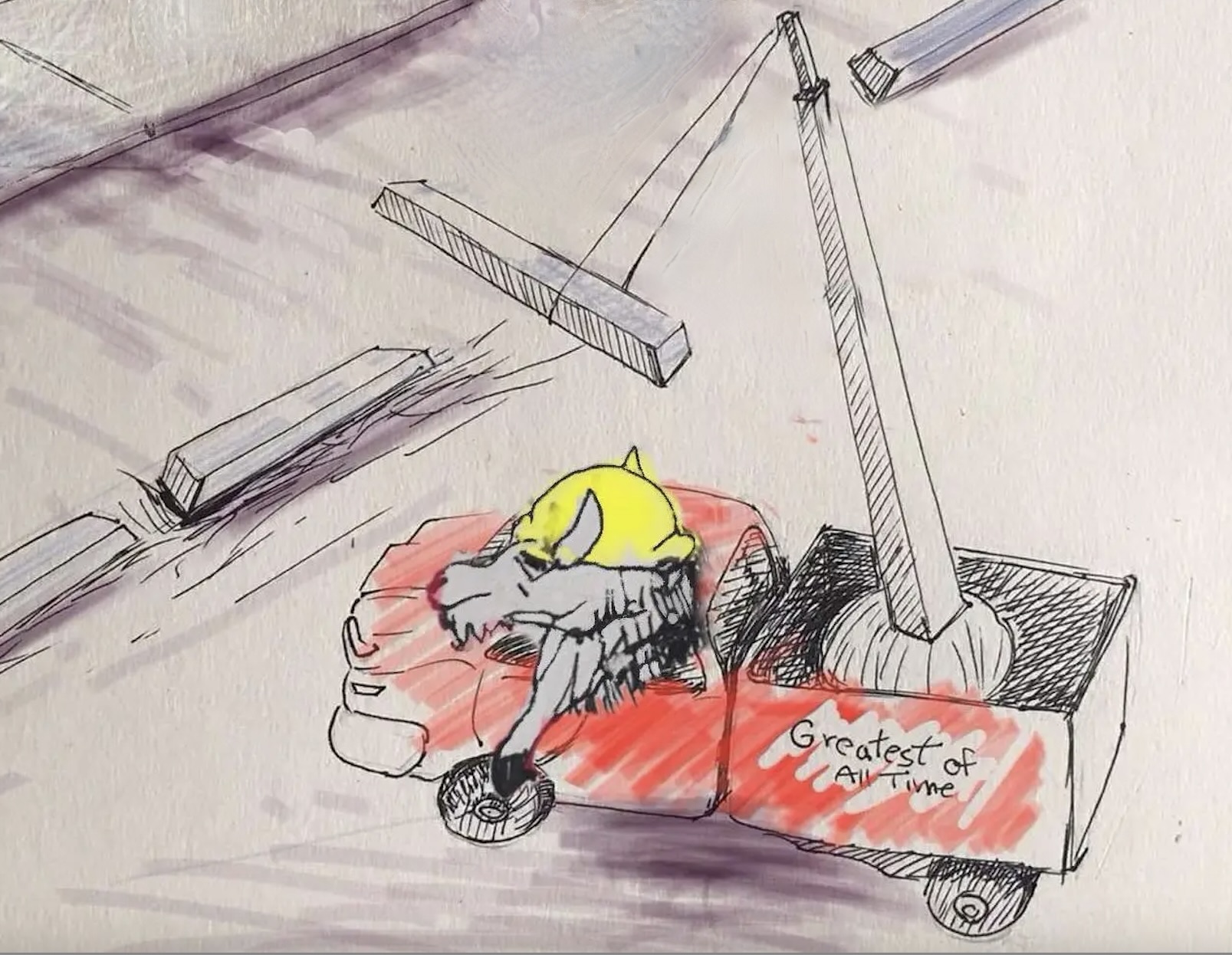
The morning after this post was published, the Chicago Department of Transportation contacted Alec Schwengler, the citizen who filed another Freedom of Information Act request regarding the Doty project, discussed at the end of this article. CDOT provided a response to his FOIA. I've added an update to the end of this piece, based on what the department sent him.
As frequent Streetsblog readers know, the Chicago Department of Transportation recently installed a stretch of curbside protected bike lanes running 1.8 miles through the Pullman community area, in the 9th Ward. The PBLs curved between 100th Street and Woodlawn Avenue near Olive Harvey College, and 111th Street and Doty Avenue near a Walmart Supercenter. The bikeway is located on the other side of Lake Calumet from Big Marsh bike park.
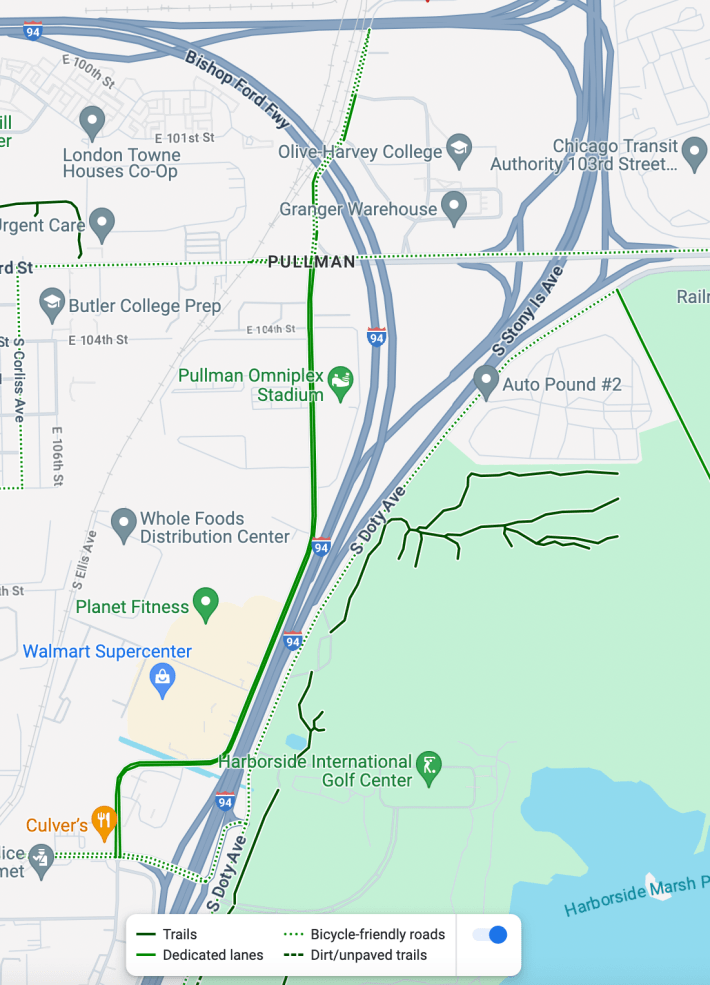
However, by last January CDOT had removed much of the concrete protections. "The pre-cast concrete curbs were removed from the Doty bike lane in coordination with [local alderperson Anthony Beale (9th)] due to drainage issues," department spokesperson Erica Schroeder told Streetsblog in February.
But Southeast Side transportation advocates said this explanation was dubious, because the Doty precast concrete curbs appeared to have spacing that allowed rainwater to drain, and they'd never seen flooding there after a storm. Some suspected that the real reason for the removals was to facilitate trucking at a local Amazon warehouse, and possibly other nearby workplaces.
Regardless of which story was accurate, there's one thing for sure. Now that there's nothing on Doty to protect bike riders from dangerous drivers except paint and flimsy plastic posts, it's a lot more dangerous to ride bicycles there. Read more background on the issue here.
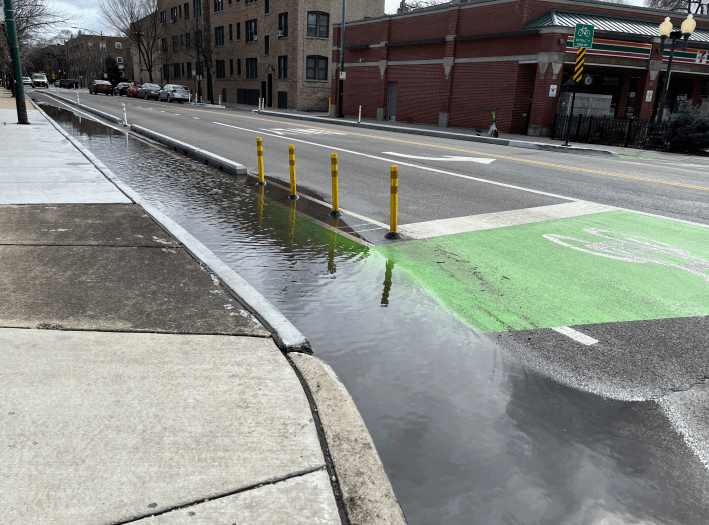
There was a new wrinkle on this story when the CTA recently announced it would be setting up shop in a now-vacant South Side building as part of its planned Red Line Extension project. The structure is located at 11203 S. Corliss Ave. in Pullman, only about a block south of the stretch of Doty where the bike lane curbs were removed. It would include office space and storage for construction equipments.
Intrigued by that news, last month I sent a Freedom of Information Act request to CDOT for any emails sent between January 1 and March 5 that included the department's Complete Streets Director David Smith and the word "Doty". Smith oversees bike and pedestrian safety projects.
The trove of messages CDOT eventually sent me included older discussions between transportation department staffers and/or construction contractors about removing and storing the Doty/Woodlawn curbs. They didn't say why the concrete infrastructure was being removed. But in a November 7, 2023 email, Theodore Mossman, a construction rep at Alfred Benesch & Company, noted, "CDOT would like to remove the pieces from Woodlawn as soon as possible."
A November 27 email from contractor MQ Construction's Brent Taylor indicates that the curbs that the company de-installed from Doty/Woodlawn were stored at a nearby CDOT yard, 900 E. 103rd St.
In a February 8 email, CDOT Commissioner Tom Carney asked Dave Smith and deputy commissioners Vig Krishnamurthy and Michael Drake, "Did we ever repurpose the curbs that we removed off of Doty in [the] 9th Ward?"
"Yes, those were installed on the Broadway/Aldine and Wrightwood locations," Drake replied. The former refers to adding protection to a previously non-protected link in a Neighborhood Greenway (mostly) side street bike route in Lakeview, to shield cyclists from traffic and prevent drivers from blocking the bikeway.

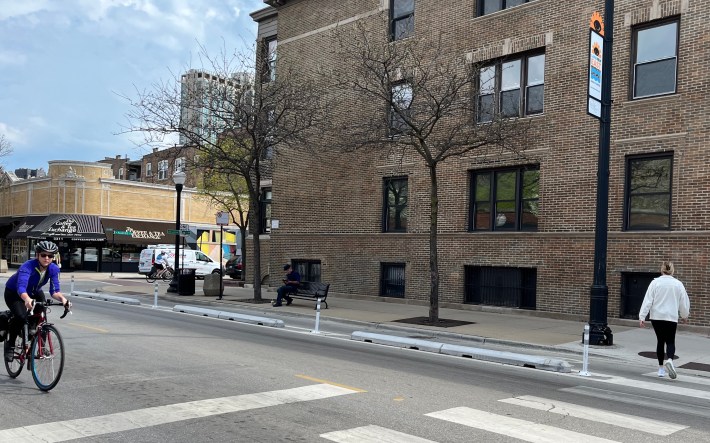
I haven't figured out which stretch of Wrightwood Avenue Drake was talking about, but I've asked CDOT about this. I'll update this post if the department provides info.
Interestingly, the response to my FOIA request showed that on February 14 someone submitted another FOIA query related to the Doty/Woodlawn curb installations and removals to CDOT. "I am seeking records that show any contracts with third party vendors or city expenses for the installation of the protected bike lane on Doty Ave in 2023, and the subsequent removal of the protected bike lane on Doty Ave in 2024," the request stated. "I am trying to understand how much the city spent to install and then remove these bike lanes, so I will accept any records that can show the cost for both the installation and uninstallation of these bike lanes."
That day CDOT FOIA Officer Gary Rubenstein sent the above query to Krishnamurthy, who forwarded it to Dave Smith. "Dave, please see attached and [let me know] if you'd like to discuss," Krishnamurthy wrote.
The February 14 FOIA request was passed around to various CDOT officials. The most recent email was on February 28 from Civil Engineer Conan Chan to colleagues and contractors. "Has Doty/Woodlawn from 111th to the Expressway precast bike lane installation cost been finalized/completed?" he wrote. "Can you give me the cost?" The other emails in the trove the department sent Streetsblog don't provide that number.
So there you have it. While Streetsblog's FOIA request didn't solve the riddle of whether the Doty protected curbs were actually removed due to flooding, as CDOT said, or to facilitate driving, as advocates suspected. But we did get some information about what's been going on behind the scenes. And maybe we'll get some more intel from the other FOIA submitter quoted above, likely this person:
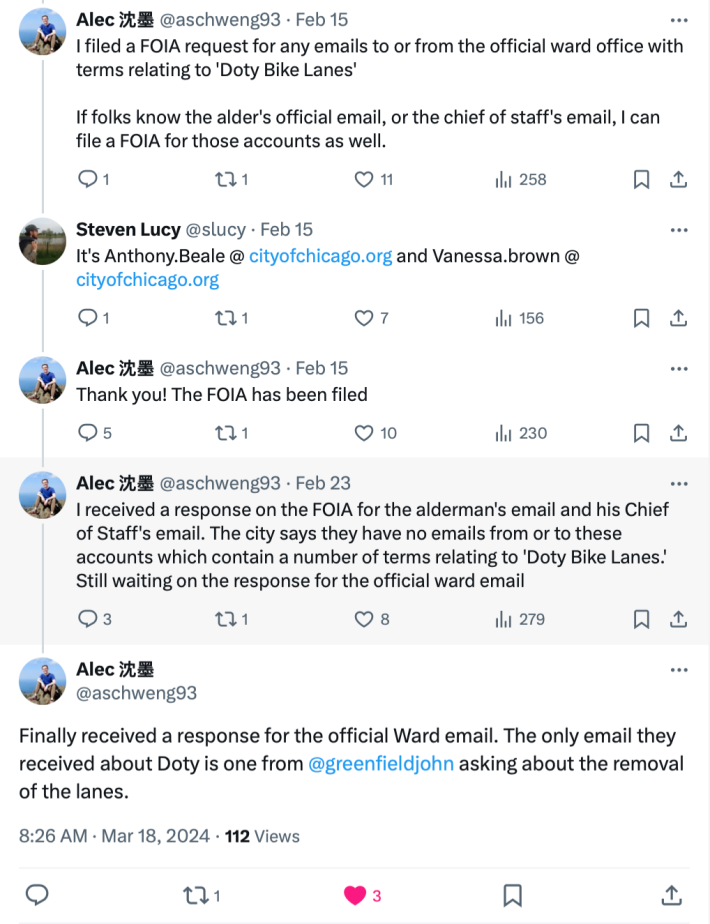
So Alec, if you've gotten any additional info about the Doty donnybrook, please pour the tea!
Update 4/16/24, 3:00 PM: And pour the tea he did! The Twitter user, Alec Schwengler, told Streetsblog he was the person who submitted the other Freedom of Information Act request, asking how much the Doty project cost. Moreover, this morning, less than a day after this Streetsblog post was published, CDOT FOIA Officer Gary Rubenstein responded to Schwengler's query, and the citizen passed the response along to us.
"CDOT conducted a thorough search of records utilizing the provided search parameters," Rubenstein wrote. "Our search uncovered the documents in the enclosed PDF, which CDOT is providing as responsive to your request. Please note that these costs include salvaged and surplus materials that can be used in the future."
Here's a screenshot of the PDF:
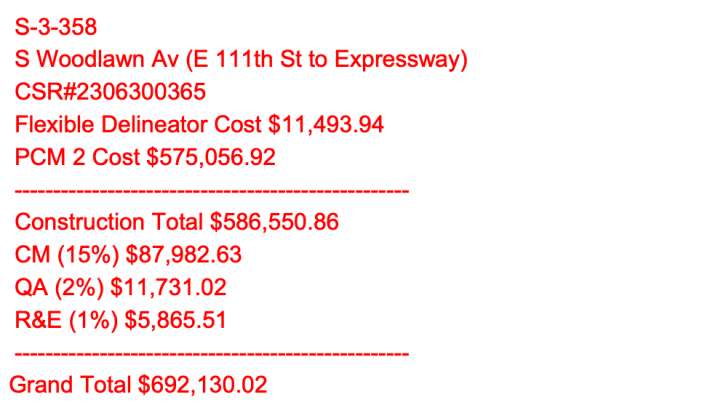
While the acronyms are somewhat esoteric, PCM refers to the precast concrete curbs, CM appears to mean construction management, QA is probably quality assurance, and RE may mean research and experimentation.
Let's assume that CDOT followed through with Schwengler's request for "city expenses for the installation of the protected bike lane on Doty Ave in 2023, and the subsequent removal of the protected bike lane on Doty Ave in 2024." So it appears that would mean the total cost of planning, installing, and removing the curbs and posts was $692,130.02, including the materials.
So it's not great that the better part of a million dollars was spend on adding physical protection to a bikeway, and then removing it, for reasons that are still unclear. On the bright side, as Rubenstein pointed out in his FOIA reply, these materials can be used for other bike projects in the future, which has already happened on Broadway.

Did you appreciate this post? Please consider making a tax-deductible donation to help Streetsblog Chicago keep publishing through 2025. Thank you.
